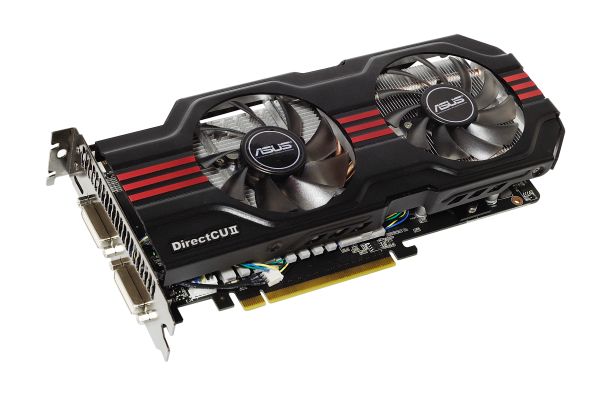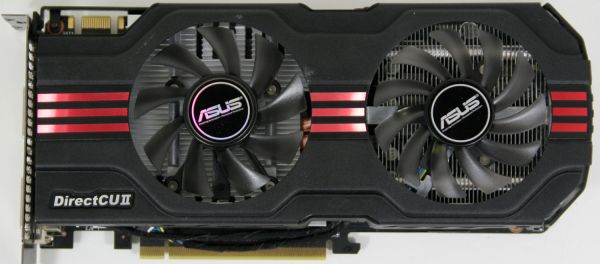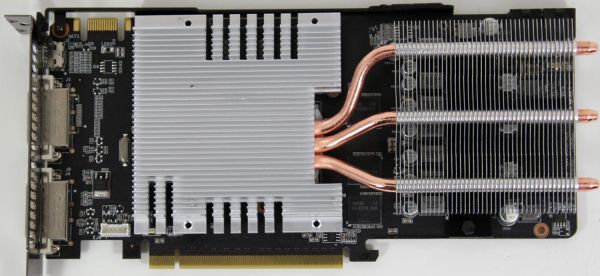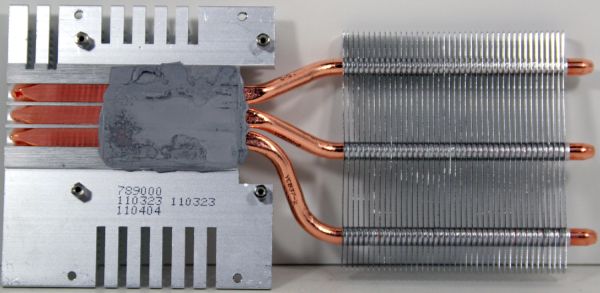
Original Link: https://www.anandtech.com/show/4344/nvidias-geforce-gtx-560-top-to-bottom-overclock
NVIDIA's GeForce GTX 560: The Top To Bottom Factory Overclock
by Ryan Smith on May 17, 2011 9:00 AM ESTNVIDIA’s GF104 and GF114 GPUs have been a solid success for the company so far. 10 months after GF104 launched the GTX 460 series, NVIDIA has slowly been supplementing and replacing their former $200 king. In January we saw the launch of the GF114 based GTX 560 Ti, which gave us our first look at what a fully enabled GF1x4 GPU could do. However the GTX 560 Ti was positioned above the GTX 460 series in both performance and price, so it was more an addition to their lineup than a replacement for GTX 460.
With each GF11x GPU effectively being a half-step above its GF10x predecessor, NVIDIA’s replacement strategy has been to split a 400 series card’s original market between two GF11x GPUs. For the GTX 460, on the low-end this was partially split off into the GTX 550 Ti, which came fairly close to the GTX 460 768MB’s performance. The GTX 460 1GB has remained in place however, and today NVIDIA is finally starting to change that with the GeForce GTX 560. Based upon the same GF114 GPU as the GTX 560 Ti, the GTX 560 will be the GTX 460 1GB’s eventual high-end successor and NVIDIA’s new $200 card.
| GTX 570 | GTX 560 Ti | GTX 560 | GTX 460 1GB | |
| Stream Processors | 480 | 384 | 336 | 336 |
| Texture Address / Filtering | 60/60 | 64/64 | 56/56 | 56/56 |
| ROPs | 40 | 32 | 32 | 32 |
| Core Clock | 732MHz | 822MHz | >=810MHz | 675MHz |
| Shader Clock | 1464MHz | 1644MHz | >=1620MHz | 1350MHz |
| Memory Clock | 950MHz (3800MHz data rate) GDDR5 | 1002Mhz (4008MHz data rate) GDDR5 | >=1001Mhz (4004MHz data rate) GDDR5 | 900Mhz (3.6GHz data rate) GDDR5 |
| Memory Bus Width | 320-bit | 256-bit | 256-bit | 256-bit |
| Frame Buffer | 1.25GB | 1GB | 1GB | 1GB |
| FP64 | 1/8 FP32 | 1/12 FP32 | 1/12 FP32 | 1/12 FP32 |
| Transistor Count | 3B | 1.95B | 1.95B | 1.95B |
| Manufacturing Process | TSMC 40nm | TSMC 40nm | TSMC 40nm | TSMC 40nm |
| Price Point | $329 | ~$239 | ~$199 | ~$160 |
The GTX 560 is basically a higher clocked version of the GTX 460 1GB. The GTX 460 used a cut-down configuration of the GF104, and GTX 560 will be doing the same with GF114. As a result both cards have the same 336 SPs, 7 SMs, 32 ROPs, 512KB of L2 cache, and 1GB of GDDR5 on a 256-bit memory bus. In terms of performance the deciding factor between the two will be the clockspeed, and in terms of power consumption the main factors will be a combination of clockspeed, voltage, and GF114’s transistor leakage improvements over GF104. All told, NVIDIA’s base configuration for a GTX 560 puts the card at 810MHz for the core clock and 4004MHz (data rate) for the memory clock, which compared to the reference GTX 460 1GB is 135MHz (20%) faster for the core clock and 404MHz (11%) faster for the memory clock. NVIDIA puts the TDP at 150W, which is 10W under the GTX 460 1GB.
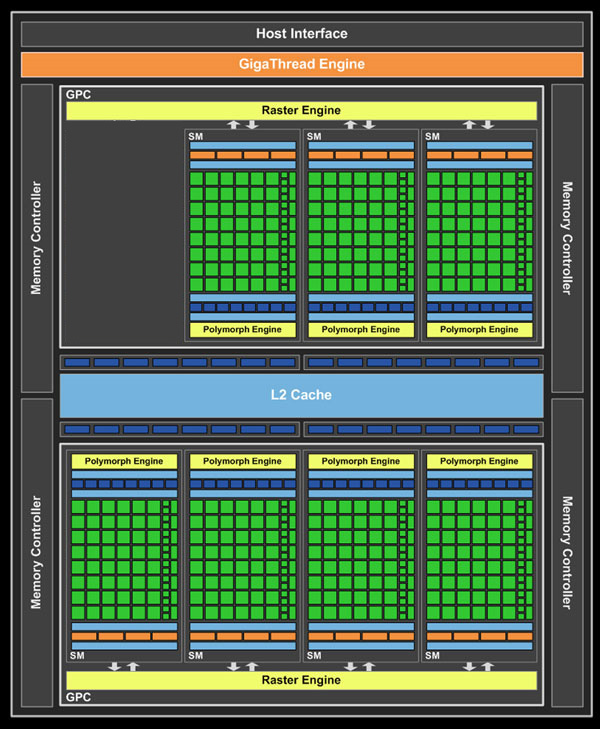
With that said, this launch is going to be more chaotic than usual for an NVIDIA mid-range product launch. While NVIDIA and AMD both encourage their partners to differentiate their mid-range cards based on a number of factors including factory overclocks and the cooler used, these products are always launched alongside a reference card. However for the GTX 560 this is going to be a reference-less launch: NVIDIA is not doing a retail reference design for the GTX 560. This is a fairly common situation for the low-end, where we’ll often test a reference design that never is used for retail cards, but it’s quite unusual to not have a reference design for a mid-range card.
As a result, in lieu of a reference card to refer to we have a bit of chaos in terms of the specs of the cards launching today. As long as you’re willing to spend a bit more in power, GF114 clocks really well, something that we’ve seen in the past on the GTX 560 Ti. This has lead to partners launching a number of factory overclocked GTX 560 Ti cards and few if any reference clocked cards, as the retail market does not have the stringent power requiements of the OEM market. So while OEMs have been using reference clocked cards for the lowest power consumption, most retail cards are overclocked. Here are the clocks we're seeing with the GTX 560 launch lineup.
| GeForce GTX 560 Launch Card List | ||||
| Card | Core Clock | Memory Clock | ||
| ASUS GeForce GTX 560 Top | 925 MHz | 4200 MHz | ||
| ASUS GeForce GTX 560 OC | 850 MHz | 4200 MHz | ||
| Palit GeForce GTX 560 SP | 900 MHz | 4080 MHz | ||
| MSI GeForce GTX 560 Twin FrozrII OC | 870 MHz | 4080 MHz | ||
| Zotac GeForce GTX 560 AMP! | 950 MHz | 4400 MHz | ||
| KFA2 GeForce GTX 560 EXOC | 900 MHz | 4080 MHz | ||
| Sparkle GeForce GTX 560 Calibre | 900 MHz | 4488 MHz | ||
| EVGA GeForce GTX 560 SC | 850 MHz | 4104 MHz | ||
| Galaxy GeForce GTX 560 GC | 900 MHz | 4004 MHz | ||
This is why NVIDIA has decided to forgo a reference card altogether, and is leaving both card designs and clocks up to their partners. As a result, we expect every GTX 560 we’ll see on the retail market will have some kind of a factory overclock, and all of them will be using a custom design. Clocks will be all over the place, while designs are largely recycled GTX 460/GTX 560 Ti designs. This means we’ll see a variety of cards, but there’s a lack of anything we can point to as a baseline. Reference clocked cards may show up in the market, but even NVIDIA is unsure of it at this time. The list of retail cards that NVIDIA has given us has a range of core clocks between 850MHz and 950MHz, meaning the performance of some of these cards is going to be noticeably different from the others. Our testing methodology has changed some as a result, which we’ll get to in depth in our testing methodology section.
With a wide variety of GTX 560 card designs and clocks, there’s also going to be a variety of prices. The MSRP for the GTX 560 is $199, as NVIDIA’s primary target for this card is the lucrative $200 market. However with factory overclocks in excess of 125MHz, NVIDIA’s partners are also using these cards to fill in the gap between the GTX 560 and the GTX 560 Ti. So the slower 850MHz-900MHz cards will be around $199, while the fastest cards will be closer to $220-$230. Case in point, the card we’re testing today is the ASUS GTX 560 DirectCU II Top, ASUS’s highest clocked card. While their 850MHz OC card will be $199, the Top will be at $219.
For the time being NVIDIA won’t have a ton of competition from AMD right at $200. With the exception of an errant card now and then, Radeon HD 6950 prices are normally $220+; meanwhile Radeon HD 6870 prices are between $170 and $220, with the bulk of those cards being well under $200. So for the slower GTX 560s their closest competition will be factory overclocked 6870s and factory overclocked GTX 460s, the latter of which are expected to persist for at least a few more months. Meanwhile for the faster GTX 560s the competition will be cheap GTX 560 Tis and potentially the 1GB 6950. The mid-range market is still competitive, but for the moment NVIDIA is the only one with a card specifically aligned for $199.
| May 2011 Video Card Prices | ||
| NVIDIA | Price | AMD |
| $700 | Radeon HD 6990 | |
| $480 | ||
| $320 | Radeon HD 6970 | |
| $260 | Radeon HD 6950 2GB | |
| $230 | Radeon HD 6950 1GB | |
| $200 | ||
| $180 | Radeon HD 6870 | |
| $160 | Radeon HD 6850 | |
| $150 | Radeon HD 6790 | |
| $130 | ||
Finally, I’d like to once again make note of the naming choice of a video card. I’m beginning to sound like a broken record here and I know it, but video card naming this last year has been frustrating. NVIDIA has a prefix (GTX), a model number (560), and a suffix (Ti), except when they don’t have a suffix. With the existence of a prefix and a model number, a suffix was already superfluous, but it’s particularly problematic when some cards have a suffix and some don’t. Remember the days of the GeForce 6800 series, and how whenever you wanted to talk about the vanilla 6800, no one could easily tell if you were talking about the series or the non-suffixed card? Well we’re back to those days; GTX 560 is both a series and a specific video card. Suffixes are fine as long as they’re always used, but when they’re not these situations can lead to confusion.
Meet ASUS’s GTX 560 DirectCU II Top
As we mentioned previously, the card we’re sampling today is ASUS’s GTX 560 DirectCU II Top, the faster of ASUS’s two GTX 560s, and the 2nd fastest card on NVIDIA’s launch list. It’s clocked at 925MHz for the core and 4200MHz (data rate) for the memory, giving it a sizable 115MHz (14%) core clock and 196MHz (5%) memory clock advantage over the GTX 560’s reference clocks. As we’ll see when we get to benchmarking, this is fast enough to start challenging reference clocked GTX 560 Tis.
We’ve reviewed a number of ASUS DirectCU cards in the past, but this is the first card we’ve reviewed from them that uses the DirectCU II cooler. What’s the difference? The DirectCU (I) was an open air cooler with single fan mounted at the center of the card; the DirectCU II uses two 80mm fans. In practice it’s similar to some previous coolers we’ve seen such as MSI’s Twin Frozr, however ASUS has managed to throw in their own unique adjustments.
Notably, the DirectCU II uses a different fan configuration than what we normally see with these dual-fan cards. Normally these cards are symmetrical – the left and right fans are the same. In the case of the DirectCU II ASUS is using different fans, with the left side using a taller 9 blade fan while the right side uses a more typical shorter 11 blade fan. ASUS hasn’t specifically mentioned why they do this – we’d assume they found it more efficient – but it’s an interesting deviation from what we normally see with this style of a cooler.
Removing the shroud and fans, we’re down to the actual HSF the cooler uses. ASUS has ditched the two large aluminum heatpipes running across the top of the card for a trio of smaller copper heatpipes running directly from the base of the HSF to the secondary heatsink over the rear of the card. These dual aluminum heatsink configurations are typical for dual-fan cards. Flipping the HSF over and we can see the base of the unit; ASUS has the heatpipes make direct contact with the GPU rather than using a baseplate to spread the heat out some. Both the heatpipes and the primary heatsink end up making contact with the GPU as a result.
Cooling for the VRMs is provided by small spring-loaded heatsinks attached directly to the MOSFETs. The airflow from the fans provides cooling for these heatsinks, along with some airflow over the GDDR5 memory modules to keep the card’s RAM cool.
Overall the build quality of the GTX 560 DirectCU II is up to the same solid standards we see out of an ASUS DirectCU card. ASUS continues to be the only manufacturer we see regularly using stiffening brackets with an open air cooler, making the card extremely rigid and almost impossible to flex. Even the shroud is surprisingly durable, having apparently been coated in some kind of metal or metal-like rigid plastic.
Moving on, with the factory overclock power consumption is undoubtedly higher than NVIDIA’s reference value of 150W. ASUS and other video card manufacturers don’t normally provide a TDP for the card, but we’d guess it’s around 170W, similar to that of the reference GTX 560 Ti. Providing this power is a pair of PCIe power sockets, which ASUS has helpfully oriented at the top of the card rather than the rear as we’ve seen on most other GTX 560/460 cards.
As is normally the case with ASUS DirectCU cards, the tradeoff in their design is that their cards are a bit bigger on average. Like the DirectCU (I), ASUS’ shroud is longer than the PCB itself, so while the PCB is only around 9.15” the total length of the card is just over 9.8”, versus 9” for the reference GTX 560 Ti. Meanwhile for display outputs, ASUS is following the typical NVIDIA design: 2x DVI ports and a single mini-HDMI port.
Rounding out the package, ASUS includes their usual collection of utilities: GamerOSD and SmartDoctor. SmartDoctor hasn’t changed since the last time we’ve looked at it; it still provides a passible but ultimately dated GUI for monitoring and overclocking the card. ASUS is offering voltage tweaking on this card for overclockers looking to push the card higher than 925MHz, so overvolting through SmartDoctor is a necessity for getting much farther than 925MHz. A good GF114 GPU should be able to hit near 1GHz with some extra voltage, though in our case we were only able to push our card to 950MHz, even at 1.075v.
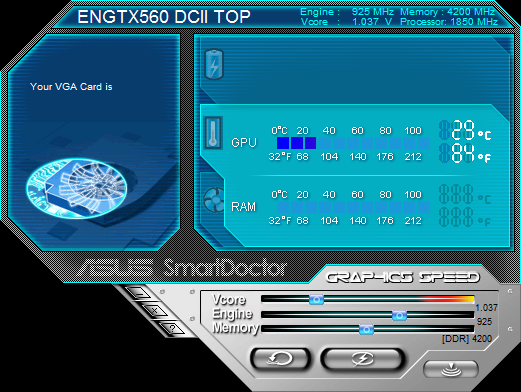
The rest of the collection is your usual pack-in fare: a multi-language quick setup guide, a mini-HDMI to HDMI dongle, 2 molex-to-PCIe power adapters, and a DVI-to-VGA dongle.
Finally, as the GTX 560 DirectCU II Top is ASUS’s top-tier GTX 560, it also has a top-tier price: ASUS is charging an additional $20 over the GTX 560 OC, for an MSRP of $219.
New Release 275 Drivers & The Test
Launching alongside the GTX 560 will be the newest branch of NVIDIA’s GeForce drivers: Release 275 beta. This actually comes hot on the heels of Release 270, which came out only a month and a half ago.
Unlike Release 270 NVIDIA isn’t making a lot of performance promises, so this is mostly a feature release. The big item in 275 for most gamers will be further refinements to the auto-update mechanism first introduced in 270. NVIDIA has finally fully ported over Optimus’ auto-update feature, meaning that NVIDIA’s drivers can now automatically find and install profile updates in the background. However whereas Optimus profile updates were necessary for switchable graphics, for desktop users the primary purpose of auto-updating profiles is for SLI and anti-aliasing compatibility, as NVIDIA uses compatibility flags in their profiles to make those features work.
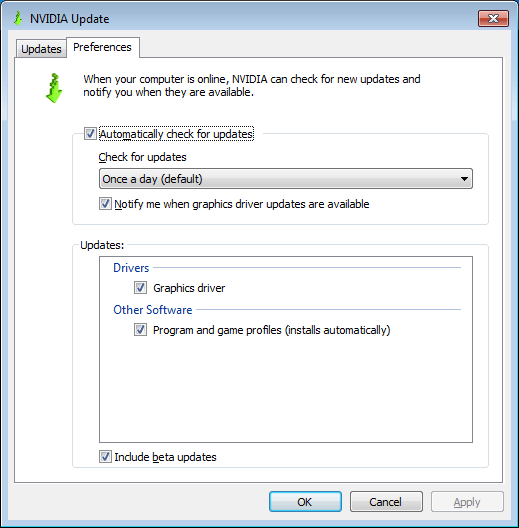
Automatic profile updates won’t completely absolve SLI from periods of incompatibility, but it should help. NVIDIA has released out of band profile updates for SLI before, but these were rather rare. If they now release profile updates much more frequently, then this will be a boon for SLI users, particularly GTX 295/590 users. Otherwise SLI is mostly limited by what can be done with a profile – if NVIDIA has to update the driver itself, then users will still need to wait for a new driver release. Which on that note, NVIDIA hasn’t changed the auto-update procedure for the drivers: profiles will auto-download and install, but driver updates must still be manually approved.
NVIDIA tells us that in the future they will also be able to deliver 3D Vision compatibility updates with profiles, but this will probably require a bit of a rearchitecting to their drivers and profiles. Currently NVIDIA’s profiles contain a few flags for 3D Vision (mainly whether it’s allowed), but there aren’t any sweeping compatibility bits as there are for SLI and AA.
Moving on, the other big functionality update with 275 is a new resizing and scaling UI in the NVIDIA control panel. The core functionality of scaling hasn’t changed much as NVIDIA has offered these controls for quite some time, but now scaling controls are available for VGA and HDMI displays, versus just DVI and DisplayPort as it was previously. There’s also a new override option or Windows 7, for forcing misbehaving programs to use NVIDIA’s scaling options instead of their own. (Ed: We’ve never actually encountered this before. If you know of any games/applications that need this option, please let us known in the comments)
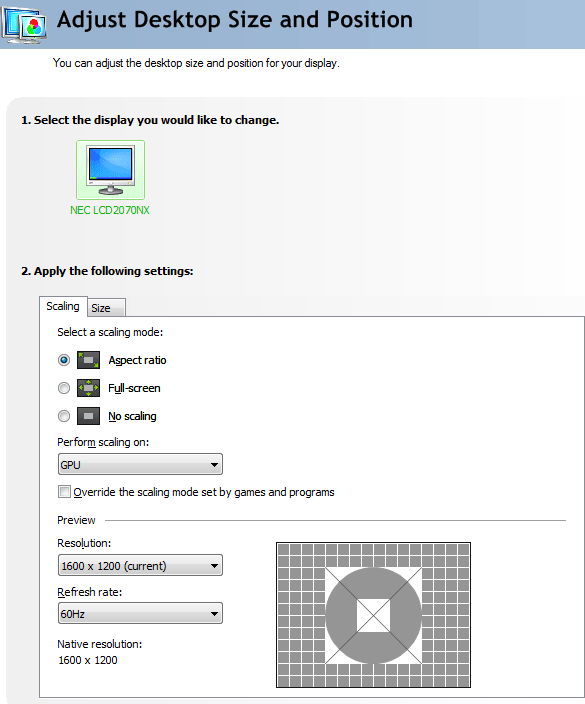
As for resizing, NVIDIA has tweaked the UI to help better guide users through using overscan correction and/or disabling overscan on their TVs. The ideal method of dealing with overscan is to disable it on the TV (thereby ensuring 1:1 pixel mapping), which is what NVIDIA now first directs users toward. For users that can’t disable overscan, they can then unlock NVIDIA’s resizing controls. NVIDIA tells us that they’ve also done some work to improve resizing compatibility for games/applications that try to force standard resolutions, but we have not had an opportunity to test this yet.
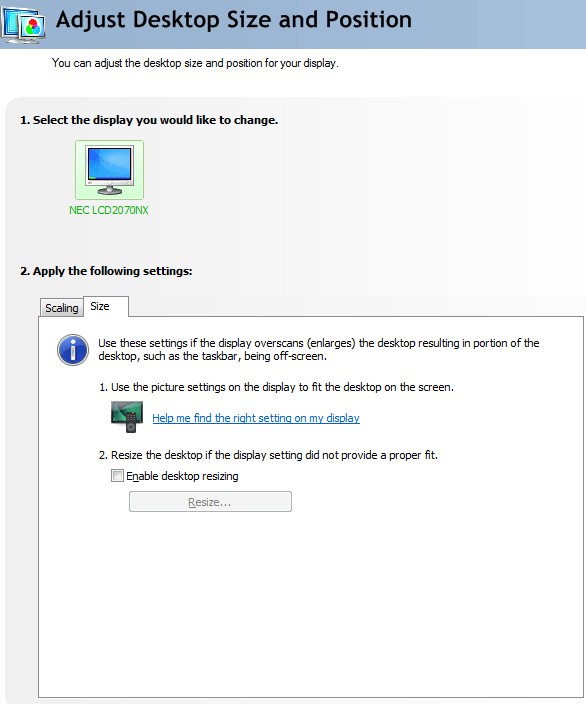
The Release 275 betas should be available later today, with WHQL drivers appearing within a month.
The Test
As we mentioned in our introduction, the lack of any reference-clocked cards means that the GTX 560’s clocks – and thereby the GTX 560’s performance – is not well rooted. As a result we’ve tested our ASUS GTX 560 DirectCU II Top at a few different clockspeeds. We’ve tested the card at NVIDIA’s reference clocks of 810/4004 (GTX 560 Base), along with the slowest "mid-grade" card on NVIDIA’s release list: 850/4104 (GTX 560 Mid). NVIDIA is pitching the GTX 560 as their $199 card, so for the purposes of our review we’ll be focusing primarily on the mid-clocked GTX 560, as this is the approximate speed of most of the $199 cards. If you buy a $199 GTX 560 today, this should closely represent the speed of the card you’re buying.
Ideally 810/4004 cards will be relegated to the OEM market, but if not we also have the base clocks included for appropriate consideration. It goes without saying that we’d rather NVIDIA just create two different product lines rather than having so many cards under the same umbrella, but at this point we’re just repeating ourselves.
We’ve also included our overclocking results with the ASUS GTX 560 DirectCU II Top, colored in orange. As we were only able to reach 950/4400, the performance gains are limited.
For drivers, on the NVIDIA side we’re using 275.20 beta for the GTX 560, the GTX 460 1GB, and GTX 560 Ti. In practice the average performance difference between release 275 and release 270 is around 1% in favor of 275. On the ATI side we’re using the Catalyst 11.5a hotfix; however do note that in our testing we’ve found that performance is identical to the 11.4 drivers.
| CPU: | Intel Core i7-920 @ 3.33GHz |
| Motherboard: | ASUS Rampage II Extreme (X58) |
| Chipset Drivers: | Intel 9.1.1.1015 (Intel) |
| Hard Disk: | OCZ Summit (120GB) |
| Memory: | Patriot Viper DDR3-1333 three x 2GB (7-7-7-20) |
| Video Cards: |
AMD Radeon HD 6970 AMD Radeon HD 6950 2GB AMD Radeon HD 6870 AMD Radeon HD 6850 AMD Radeon HD 5870 AMD Radeon HD 5850 AMD Radeon HD 5770 AMD Radeon HD 4870 NVIDIA GeForce GTX 580 NVIDIA GeForce GTX 570 NVIDIA GeForce GTX 560 Ti ASUS GeForce GTX DirectCU II Top NVIDIA GeForce GTX 550 Ti NVIDIA GeForce GTX 480 NVIDIA GeForce GTX 470 NVIDIA GeForce GTX 460 1GB NVIDIA GeForce GTS 450 NVIDIA GeForce GTX 285 NVIDIA GeForce GTX 260 Core 216 |
| Video Drivers: |
NVIDIA ForceWare 262.99 NVIDIA ForceWare 270.51 Beta NVIDIA ForceWare 275.20 Beta AMD Catalyst 10.10e AMD Catalyst 11.4 AMD Catalyst 11.5a |
| OS: | Windows 7 Ultimate 64-bit |
Crysis: Warhead
Kicking things off as always is Crysis: Warhead, still one of the toughest games in our benchmark suite. Even three years since the release of the original Crysis, “but can it run Crysis?” is still an important question, and for three years the answer was “no.” Dual-GPU halo cards can now play it at Enthusiast settings at high resolutions, but for mid-range cards like the GTX 560, you’re not going to get much better than 40fps at 1080P.
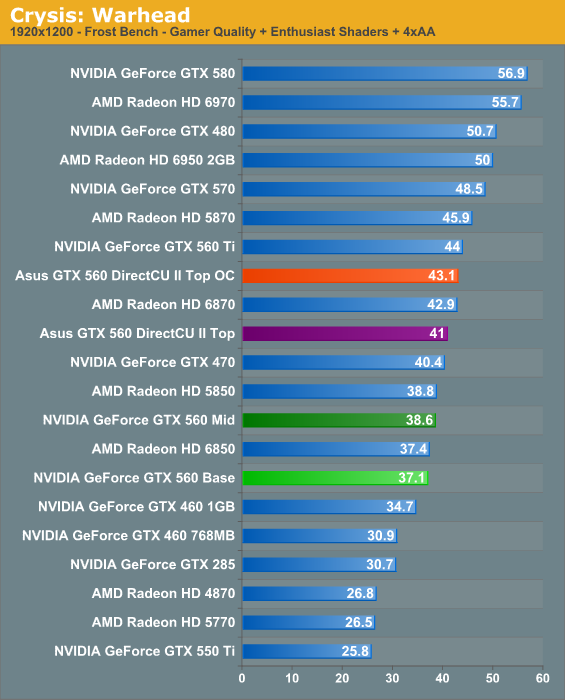
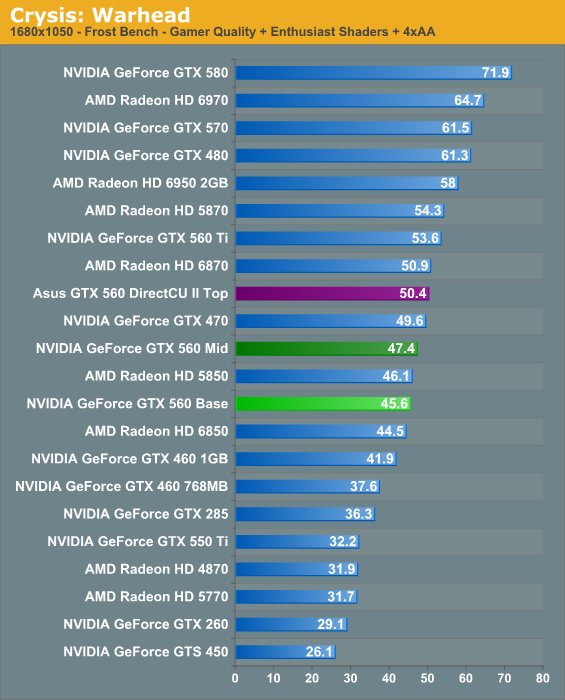
Historically Crysis is a good game for the 6800 series, so even with the clock boost the GTX 560 Mid can’t really keep up with AMD’s offerings. At 38.6fps the gains over the GTX 460 1GB are decent, but it’s only enough to clear the Radeon HD 6850. Clearing the 6870 requires the GTX 560 Ti, or a 950MHz GTX 560 as in the case of our overclocked ASUS card. Meanwhile clearing the 6950 simply isn’t going to happen.
It is interesting to note just how close the ASUS GTX 560 DirectCU II Top gets to the reference clocked GTX 560 Ti however; it’s still 5% behind, but it’s very close to what launched as a $250 card a few months ago. Given that the difference between the GTX 560 and GTX 560 Ti is a single SM, it should be possible for a well overclocked GTX 560 to place near the GTX 560 Ti. Not surprisingly, this is a big factor for why there are so few reference clocked GTX 560 Tis, and so many factory overclocked models.
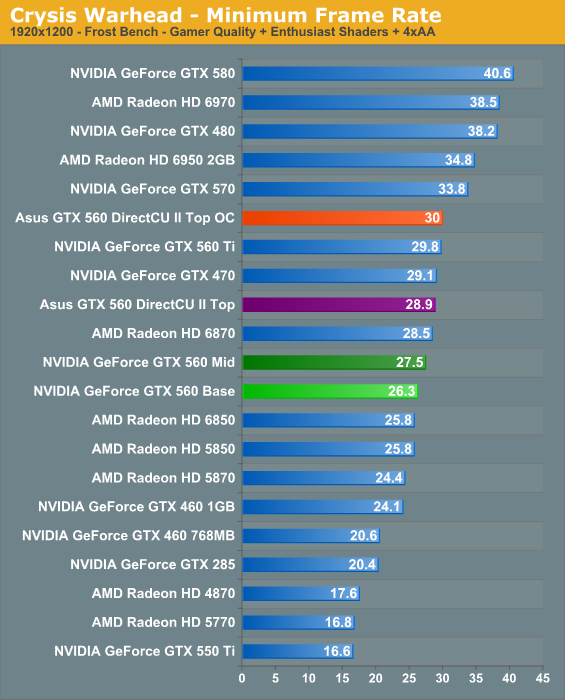
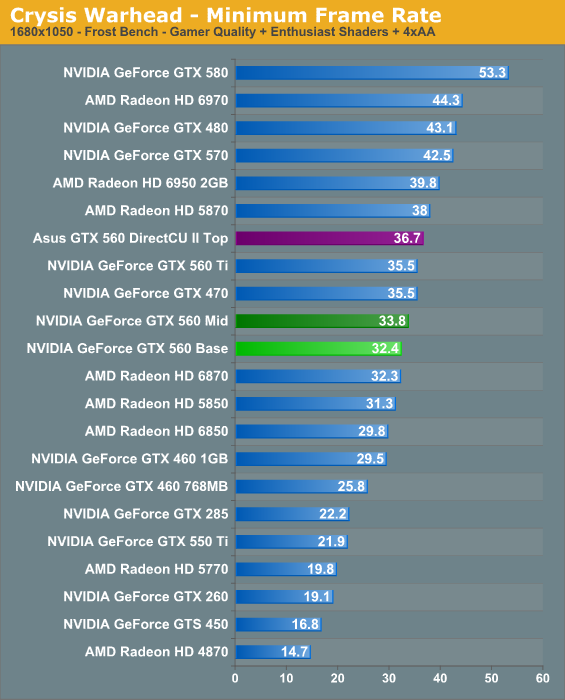
While AMD does better on average, the minimums tilt away from AMD’s favor. The GTX 560 Mid still trails the 6870, but overall it’s much closer than the average framerate was.
BattleForge
Up next is BattleForge, Electronic Arts’ free to play online RTS. As far as RTSes go this game can be quite demanding, and this is without the game’s DX11 features.
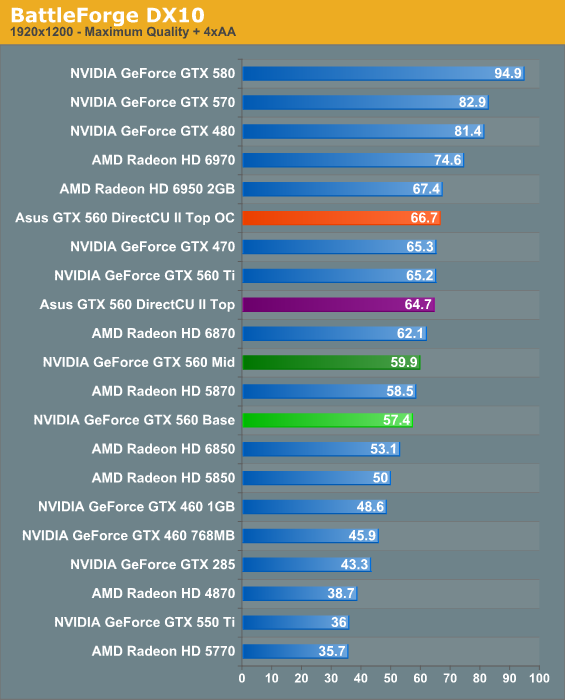
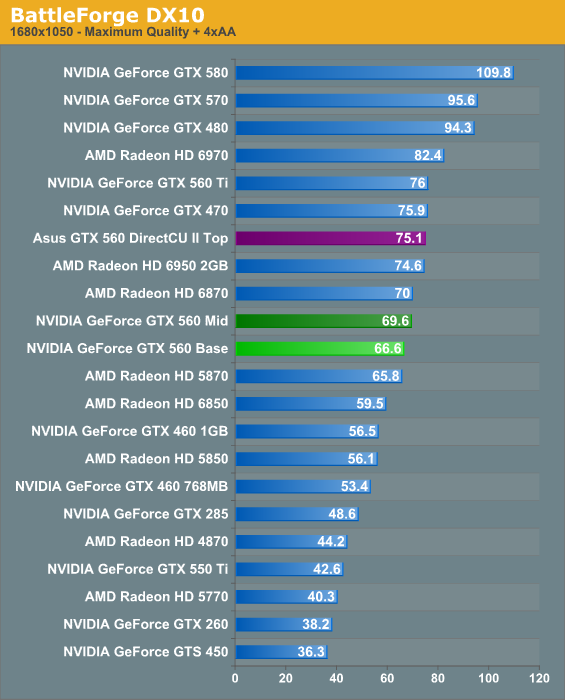
Compared to the rest of the NVIDIA lineup, the GTX 560 Mid’s results under BattleForge are even better than they were under Crysis. The GTX 560 Mid is still trailing the GTX 560 Ti by 8%, but this is a smaller gap than we saw under Crysis, meanwhile the GTX 560 Mid is now over 20% faster than the GTX 460 1GB. Keep in mind the theoretical improvement from the 460 to the 560 is about 25%, so we’re attaining almost all of that here. BattleForge has long been a candidate for being ROP partially limited, and this appears to be a good set of data to prove that.
With that said, the GTX 560 still struggles to beat AMD’s offerings. The 6870 has about 5% on the GTX 560 Mid, meanwhile our ASUS GTX 560 trails the 6950 by a similar margin, requiring a further overclock to bring down the gap.
Metro 2033
The next game on our list is 4A Games’ tunnel shooter, Metro 2033. Metro is quite a resource intensive game, and if Crysis is a tropical GPU killer, then Metro would be its underground counterpart.
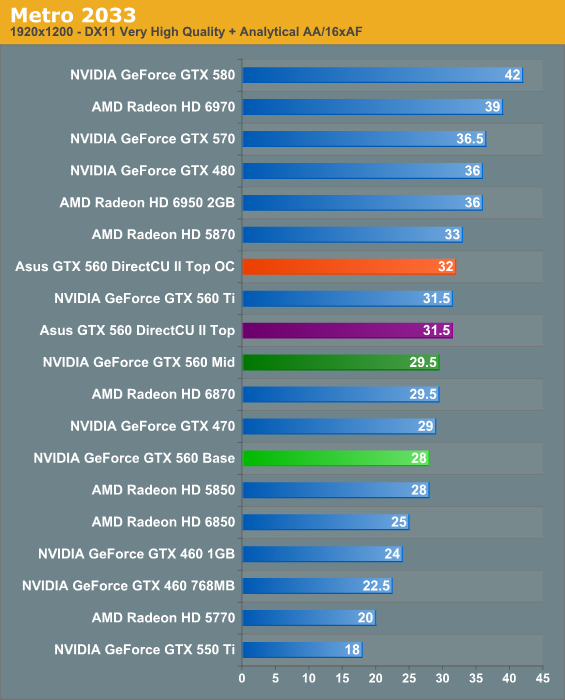
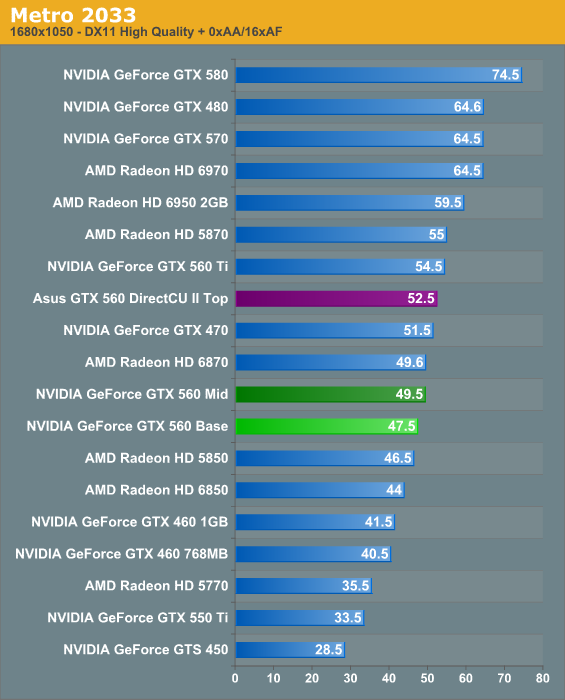
With Metro the GTX 560 Mid has finally caught up to the 6870, with the two tying at 29.5fps at 1920. The 6900 series does quite well at this game though, leading to the 6950 taking a solid lead over even our overclocked ASUS GTX 560.
Meanwhile as compared to NVIDIA’s lineup, this is another game where the GTX 560 Mid does well relative to a number of NVIDIA cards. The lead over the GTX 460 is at 22%, while the GTX 560 Ti only has a 7% lead of its own. As for the ASUS GTX 560, it ends up in an interesting situation of its own: it beats the GTX 560 Ti, and this is without any additional overclocking on our part. On paper it takes a 940MHz GTX 560 Mid (7 SMs) to beat a GTX 560 Ti (8 SMs), and in this case Metro is shader bound enough to make it happen. This really may be the biggest threat that these factory overclocked GTX 560s pose to anyone: making the GTX 560 Ti redundant.
HAWX
Ubisoft’s 2008 aerial action game is one of the less demanding games in our benchmark suite, particularly for the latest generation of cards. However it’s fairly unique in that it’s one of the few flying games of any kind that comes with a proper benchmark.
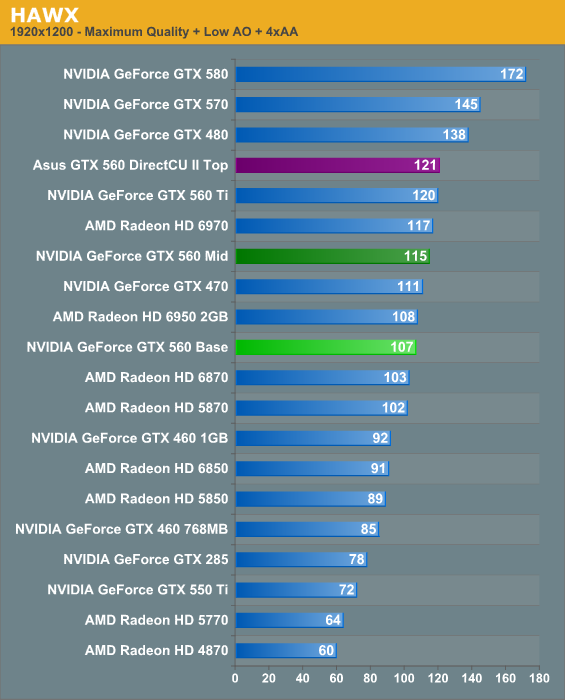
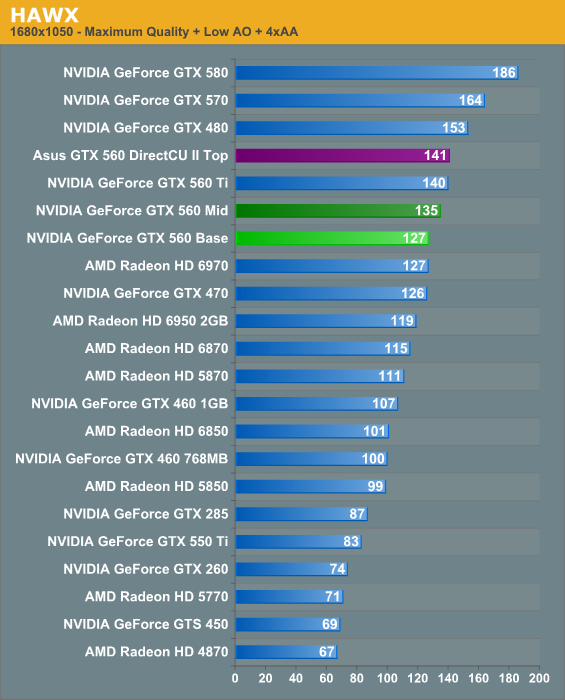
HAWX is a game that NVIDIA does well at under almost all circumstances, so the results here aren’t particularly surprising. The GTX 560 Mid is fast enough to catch the 6970, never mind the 6870. Meanwhile the ASUS GTX 560 Top once again scrapes past the GTX 560 Ti to beat it by all of 1fps.
Civilization V
Civilization 5 is the latest incarnation in Firaxis Games’ series of turn-based strategy games. Civ 5 gives us an interesting look at things that not even RTSes can match, with a much weaker focus on shading in the game world, and a much greater focus on creating the geometry needed to bring such a world to life. In doing so it uses a slew of DirectX 11 technologies, including tessellation for said geometry and compute shaders for on-the-fly texture decompression.
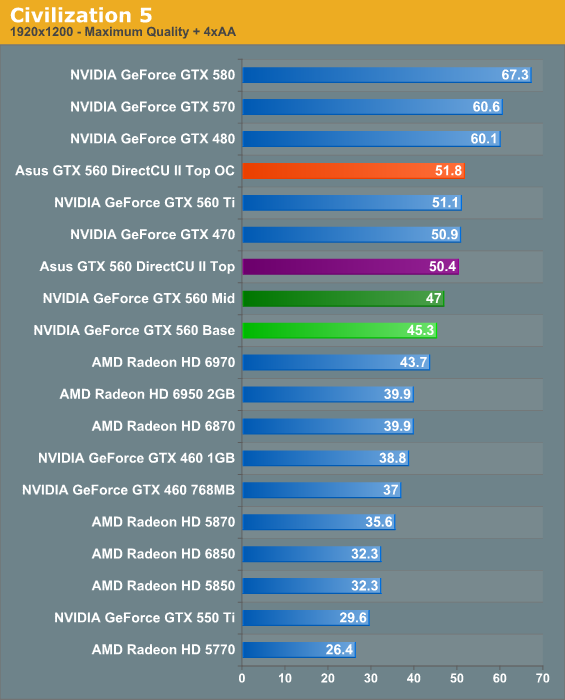
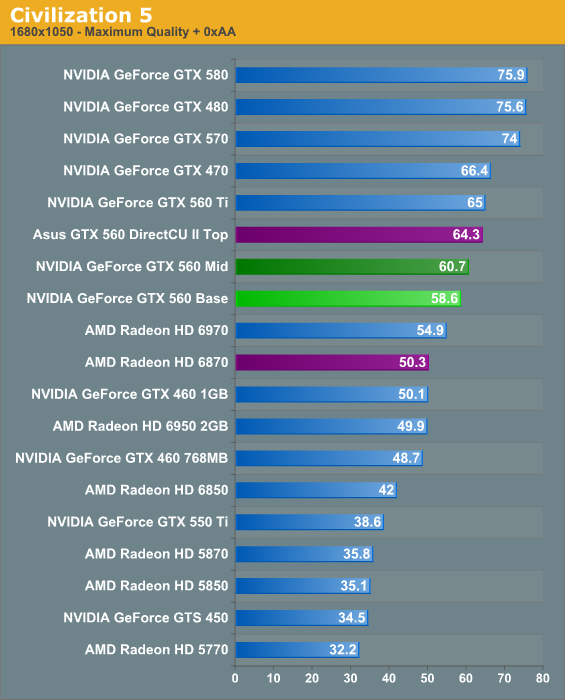
Ever since NVIDIA unlocked multithreaded rendering for Civ V a few months ago they’ve had a solid lead, and this has yet to abate. Even the GTX 560 Base (810MHz) can beat the 6970, and it only gets better from there.
Compared to the rest of NVIDIA’s lineup the GTX 560 Mid once again does well against the GTX 460 1GB, but at a 20% lead it isn’t quite as far ahead as it has been in some other games. On the other hand, the ASUS GTX 560 once again edges out the GTX 560 Ti.
Battlefield: Bad Company 2
Now approaching a year old, Bad Company 2 remains as one of the cornerstone DX11 games in our benchmark suite. Based on the Frostbite 1.5 engine, it will be replaced in complexity by the DX10+ only Frostbite 2 engine (and Battlefield 3) later this year. As BC2 doesn’t have a built-in benchmark or recording mode, here we take a FRAPS run of the jeep chase in the first act, which as an on-rails portion of the game provides very consistent results and a spectacle of explosions, trees, and more.
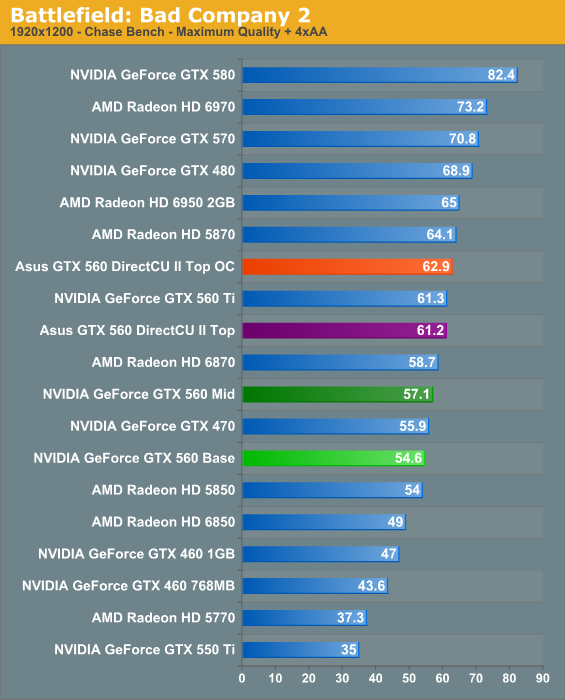
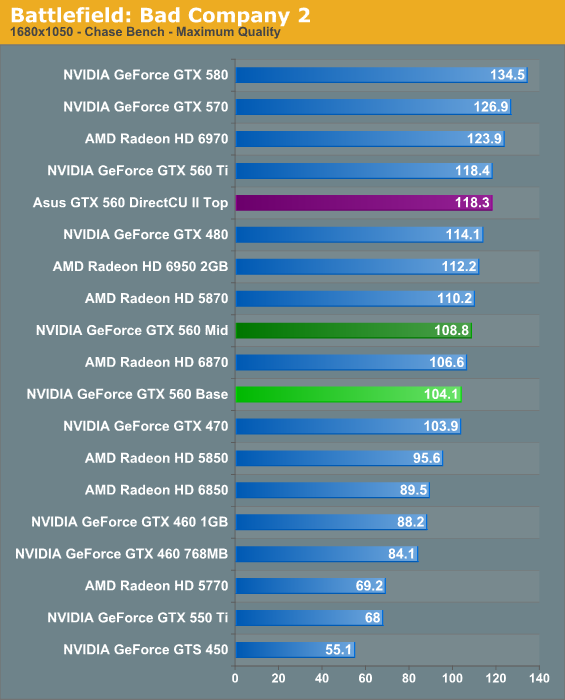
With Bad Company 2, AMD and NVIDIA are once again on much more equal footing, and we have much more interesting results.
Compared to AMD’s lineup the GTX 560 Mid falls behind the 6870, but it’s very close with a difference under 2fps. Our higher clocked GTX 560 configurations can’t quite catch up to the 6970 however, with the latter taking a small but notable lead.
As for NVIDIA’s lineup, the relative performance is roughly the same as in most of our other games. The GTX 560 Mid has 21% on the GTX 460 1GB, while trailing the GTX 560 Ti by 8%. Amusingly, at the same time as all of this the GTX 560 Mid manages to beat the GTX 470, thanks to the massive difference in clockspeed between the two, leading to the GTX 560 Mid nullifying the latter’s functional unit count advantage.
STALKER: Call of Pripyat
The third game in the STALKER series continues to build on GSC Game World’s X-Ray Engine by adding DX11 support, tessellation, and more. This also makes it another one of the highly demanding games in our benchmark suite.
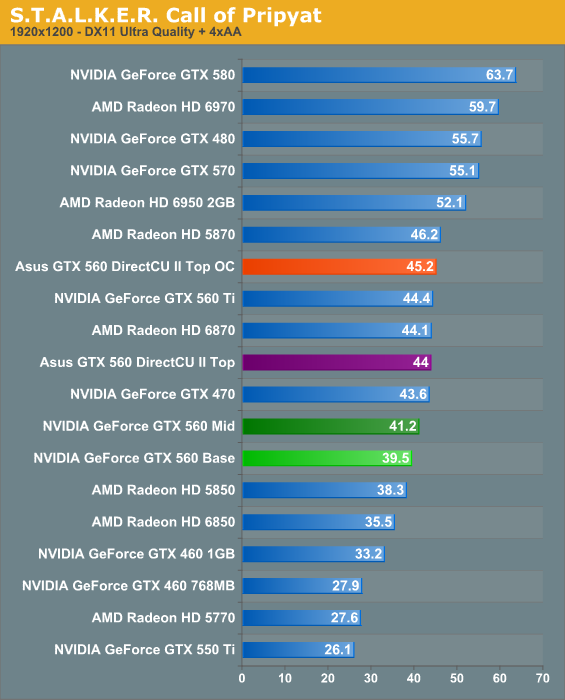
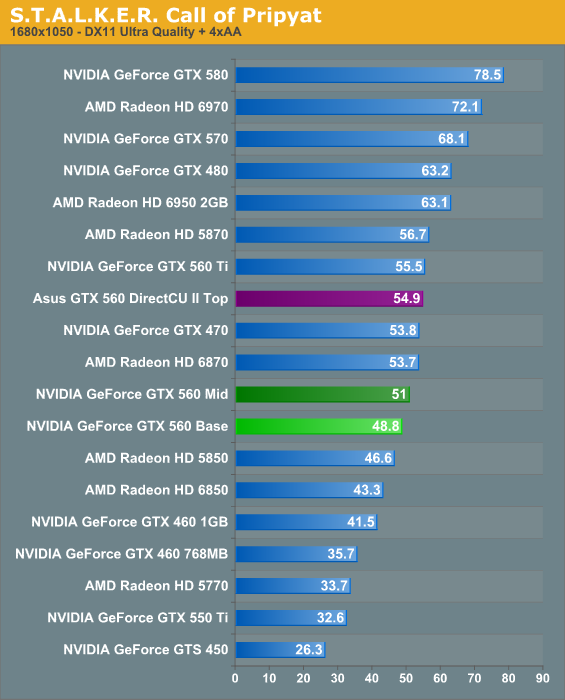
STALKER is another game where the GTX 560 Mid struggles compared to AMD’s offerings, and here so a bit more than elsewhere. At 41.2fps the GTX 560 Mid is at least well ahead of the 6850, but it’s short of the 6870 by about 7%. Even the ASUS GTX 560 can only tie it. Overall from a competitive standpoint this is one of the worst games for NVIDIA.
As for the GTX 560 versus the rest of NVIDIA’s lineup, the situation is basically the same as always. The GTX 560 Mid does very well versus the GTX 460 1GB here, beating it by 24%, while the GTX 560 Ti has a bit more of a lead than usual at 8%. The ASUS GTX 560 is very close to overtaking the GTX 560 Ti once more though, showing just how close the GTX 560 Ti is to these factory overclocked cards.
DIRT 2
Codemasters’ 2009 off-road racing game continues its reign as the token racer in our benchmark suite. As the first DX11 racer, DiRT 2 makes pretty thorough use of the DX11’s tessellation abilities, not to mention still being among the best looking racers we have ever seen.
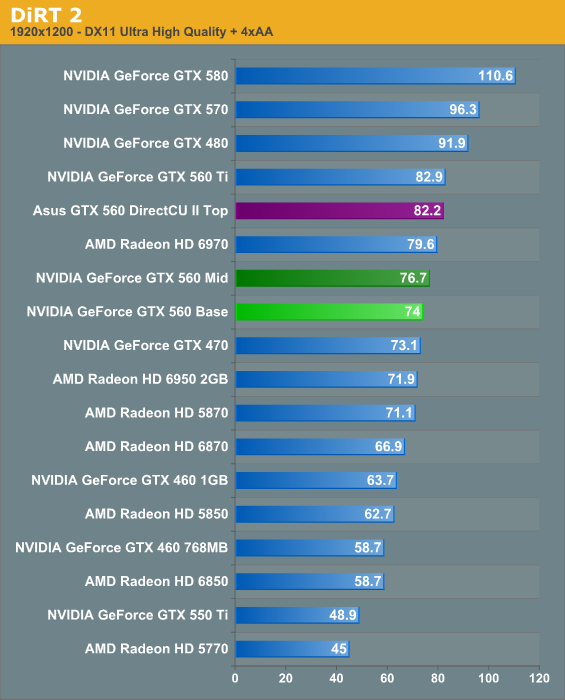
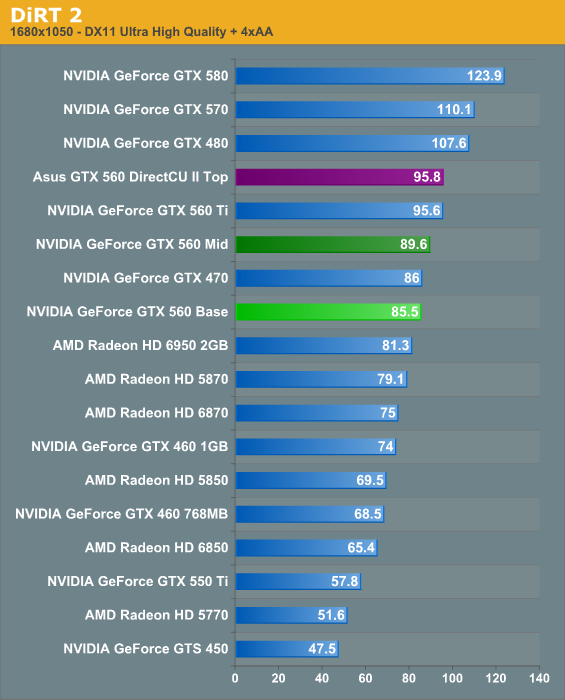
With DIRT 2 we once again are seeing just how bipolar NVIDIA and AMD’s relative performance is. The NVIDIA cards once more swing into the lead, with the Mid overtaking everything except the 6970. Only our ASUS GTX 560 can overtake AMD’s single-GPU leader, which puts it in the company of the GTX 560 Ti.
The linup compared to NVIDIA’s other cards is otherwise the same: the GTX 560 Mid has 20% on the GTX 460 1GB, and the GTX 560 Ti has 8% on the GTX 560 Mid.
Mass Effect 2
Electronic Arts’ space-faring RPG is our Unreal Engine 3 game. While it doesn’t have a built in benchmark, it does let us force anti-aliasing through driver control panels, giving us a better idea of UE3’s performance at higher quality settings. Since we can’t use a recording/benchmark in ME2, we use FRAPS to record a short run.
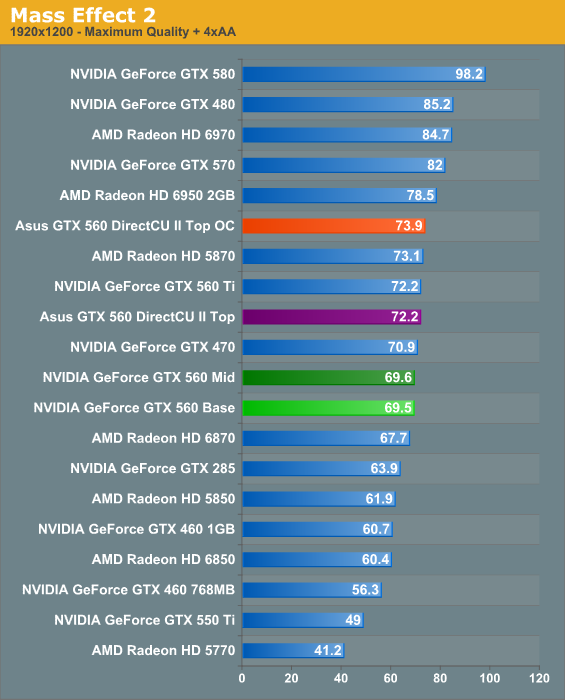
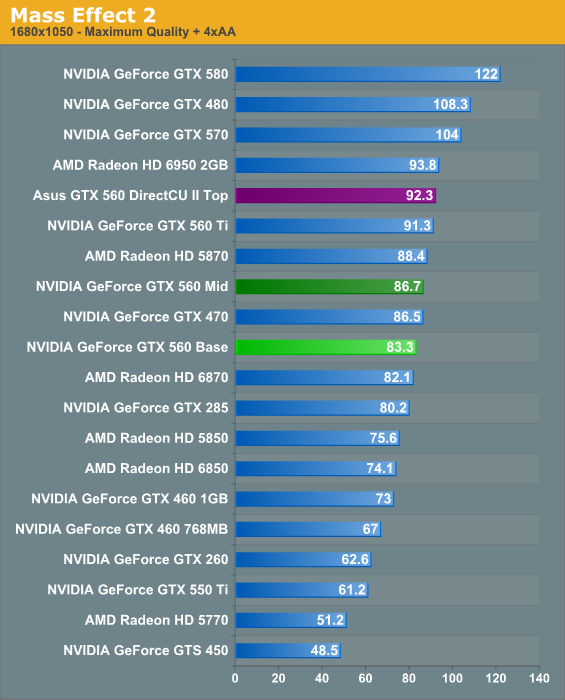
With Mass Effect 2, AMD and NVIDIA are once again closer to parity, with NVIDIA generally coming out ahead this time. The GTX 560 Mid has a small 3% lead over the 6870, however the 6950 more than keeps its distance from even the best overclocked GTX 560.
Interestingly, among NVIDIA’s lineup the GTX 560 Mid doesn’t do nearly as well compared to the GTX 460 1GB as it normally does. In this case it only has a 14% advantage, well below what it usually has. At the same time the GTX 560 Ti is only 3% ahead of the GTX 560 Mid, which is also lower than normal. Given the insensitivity ME2 seems to have to core clocks and functional units, it looks to be memory bandwidth limited, in which case the GTX 560 Series more limited memory bandwidth gains versus the GTX 460 series means they don’t accumulate quite as big of a lead. The pressure on the memory bandwidth appears to be resolution related though, at least to some extent: the gaps do widen back up once we go to 1680.
Wolfenstein
Finally among our benchmark suite we have Wolfenstein, the most recent game to be released using the id Software Tech 4 engine. All things considered it’s not a very graphically intensive game, but at this point it’s the most recent OpenGL title available. It’s more than likely the entire OpenGL landscape will be thrown upside-down once id releases Rage later this year.
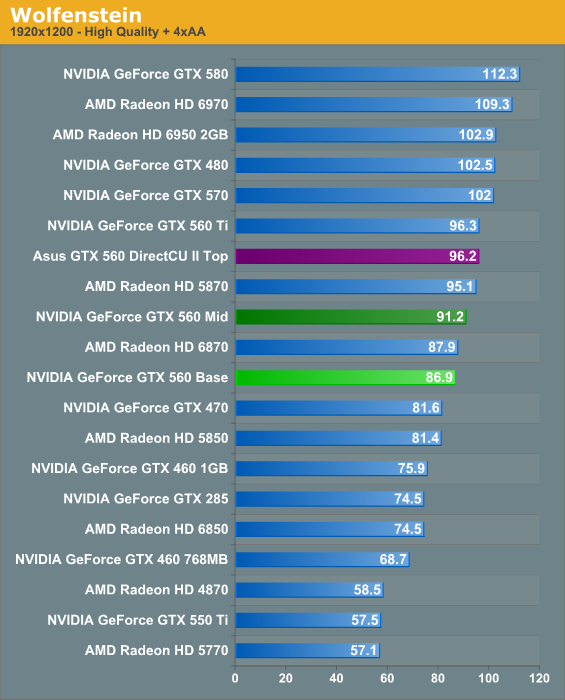
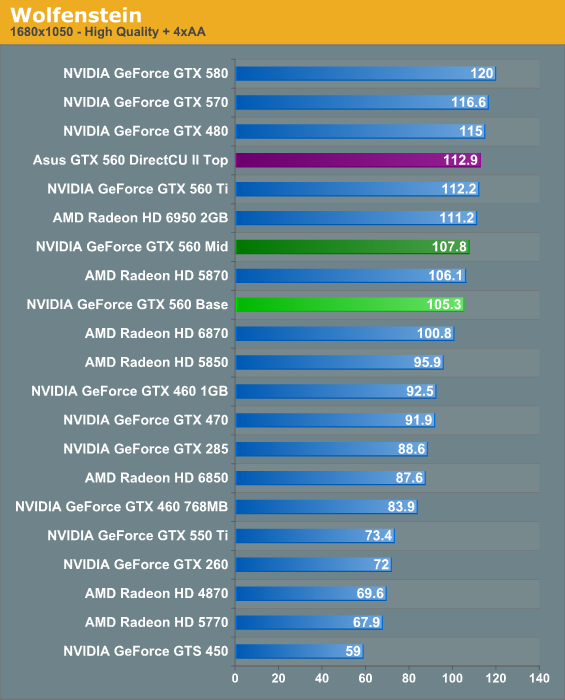
Our final game once again puts AMD and NVIDIA fairly close, at least around the $200 range. The GTX 560 Mid once again has the lead over the 6870, beating the 6870 out by about 3%. On the flip side the 6950 is several percent ahead of all of our GTX 560 configurations. On a relative basis NVIDIA’s cards end our gaming suite at about the same place they started: the GTX 560 Mid has 20% on the GTX 460 1GB, while the Mid trails the GTX 560 Ti by about 6%. The ASUS GTX 560 DirectCU II Top also closes out at a familiar position, being virtual tied with the GTX 560 Ti.
Compute Performance
Moving on from our look at gaming performance, we have our customary look at compute performance. Since compute performance is by definition shader bound, the GTX 560 is at a bit of a disadvantage here. Whereas the higher clocked ROPs would offset some of the GTX 560 Ti’s gaming lead, here the GTX 560 has nothing to stand on besides raw shader power.
Our first compute benchmark comes from Civilization V, which uses DirectCompute to decompress textures on the fly. Civ V includes a sub-benchmark that exclusively tests the speed of their texture decompression algorithm by repeatedly decompressing the textures required for one of the game’s leader scenes. Note that this is a DX11 DirectCompute benchmark.
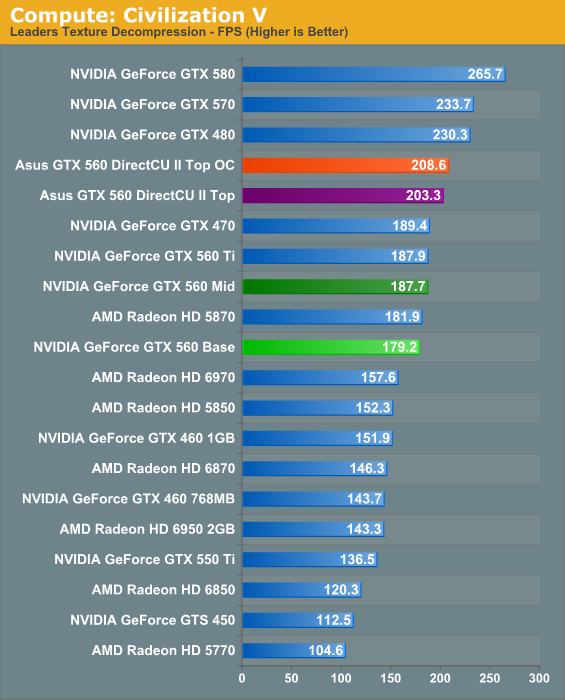
This benchmark threw us for a bit of a loop, and we ended up running it several more times just to be sure. Under most circumstances the texture decompression test should be shader bound, but here it’s not – or at least not entirely. The GTX 560 Mid and GTX 560 Ti basically tie here, which is quite odd since the GTX 560 Ti has quite a shader advantage due to the 8th SM. As best as we can tell, either texture decompression doesn’t scale well with SMs, or it’s memory bandwidth bound at some point, with the latter case being the more likely of the two.
In any case as a result the GTX 560 Mid does quite well here, and the ASUS GTX 560 with its factory overclock shoots right past everything short of the 480/570/580. We’ll have to see if this weird outcome holds up in our other compute benchmark.
Our second compute benchmark of the day is SmallLuxGPU, the GPU ray tracing branch of the open source LuxRender renderer. While it’s still in beta, SmallLuxGPU recently hit a milestone by implementing a complete ray tracing engine in OpenCL, allowing them to fully offload the process to the GPU. It’s this ray tracing engine we’re testing.
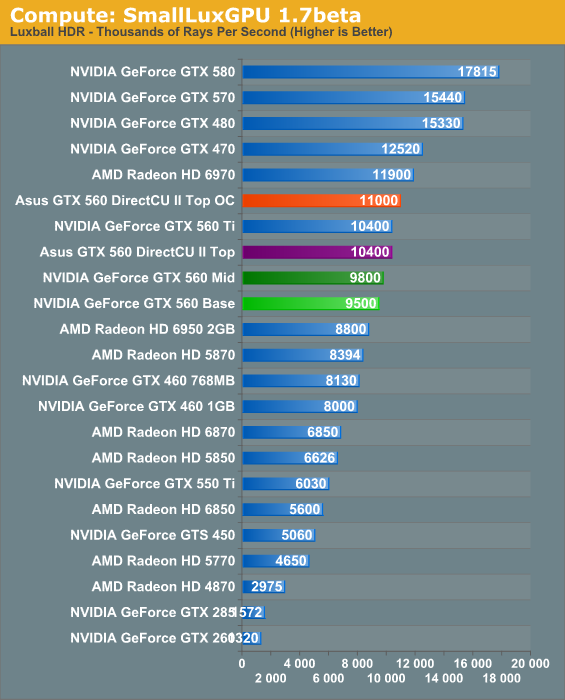
Under SmallLuxGPU the GTX 560 behaves much more like we’d expect it to. The GTX 560 Mid does well, but it still falls behind the GTX 560 Ti as we’d expect. Keeping in mind that the theoretical difference should be around 10% in favor of the GTX 560 Ti however, the GTX 560 Mid still does a bit better than we were expecting, letting the GTX 560 take off with only a 6% lead. Compared to the GTX 460 however the difference is almost exactly what we’d expect it to be: the GTX 560 Mid is ahead by 23%.
Overall our compute results leave us a bit surprised: while extra shaders are normally extremely beneficial on compute benchmarks, that’s not entirely the case here. The GTX 560 series was never meant to be a compute powerhouse like the GTX 570/580, but if compute performance is a factor in your purchasing decision then it looks like you aren’t giving up much moving from a GTX 560 Ti to a GTX 560 Mid.
Power, Temperature, & Noise
Last but not least as always is our look at the power consumption, temperatures, and acoustics. As there isn’t a reference GTX 560, we’re working with what we have: the ASUS GTX 560 DirectCU II Top. For the sake of completeness we’re including our results for power/temp/noise at both the Base (810MHz) and Mid (850MHz) on the ASUS card. However if ASUS is goosing the voltage a bit to hit 925MHz, then it’s likely we’re drawing a bit more power here than a card specifically targeted for those performance levels.
| GeForce GTX 460/560 Series Load Voltage | |||||
| GTX 460 | GTX 560 Ti | ASUS GTX 560 | ASUS GTX 560 OC | ||
| 1.025v | 1.0v | 1.037v | 1.062v | ||
Looking at voltage quickly, ASUS is running the GTX 560 Top at 1.037v. This is a bit more than any other GF114/GF104 card that we’ve seen, but not by a great deal. The voltage difference between the GTX 560 Top and the reference GTX 560 Ti does mean that any power benefits of having a SM disabled are wiped out. In other words, the GTX 560 Top can offer GTX 560 Ti-like performance, but at GTX 560 Ti-like power consumption.
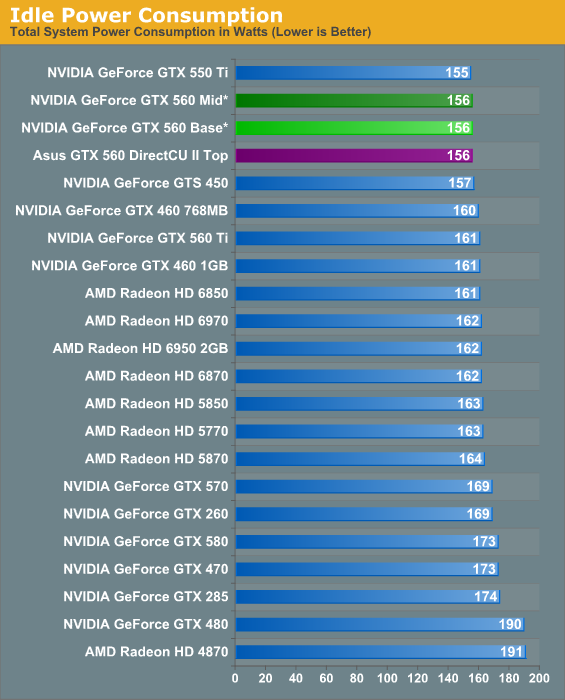
Idle power consumption looks very good here. The GTX 560 Ti already did well, and now the GTX 560 does even better. The difference ultimately comes down to the power savings realized by disabling a SM.
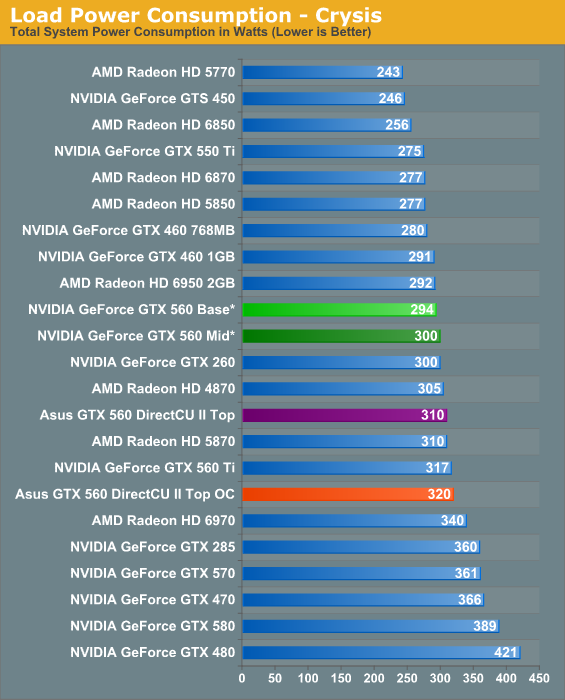
Starting with our sample card, the ASUS GTX 560, we’ve already hinted at the fact that power consumption between these heavily factory overclocked cards and the GTX 560 Ti will end up being very similar, in accordance with their similar performance. The results deliver on that concept, with the ASUS GTX 560 and the GTX 560 Ti being separated by only 7W in the ASUS GTX 560’s favor. Overclocking doesn’t have the expected ramp up in power consumption however, as even with the slightly higher clocks and higher voltage, power consumption only rises by 10W for the whole system.
As for our simulated GTX 560 Base and Mid, we can’t say too much. Based on NVIDIA’s specs and the better leakage properties of GF114, there’s no reason why a GTX 560 built for those clocks shouldn’t be able to achieve power consumption similar to (if not better than) the GTX 460 series. We’d get far better data from a suitably lower performing GTX 560 card.
One thing that is clear however is that unless power consumption on lower clocked GTX 560s was more than 20W lower, AMD’s general advantage in power consumption is unchallenged. The same can be said for the GTX 6950, which consumes nearly 18W less than the ASUS GTX 560, even though the latter is often the performance laggard.
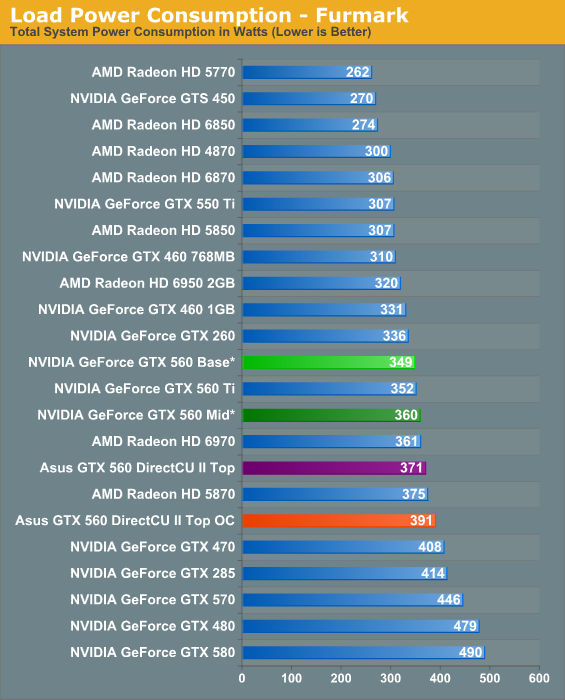
Under FurMark the ASUS GTX 560 actually does worse than the GTX 560 Ti, likely due to the ASUS card’s lack of overcurrent protection circuitry and the realization of the full impact of operating at a higher voltage. The difference isn’t this pronounced in games, but FurMark hits all the right notes. Along this same train of thought we see our overclocked ASUS GTX 560 consuming a further 20W beyond what the card consumes under factory settings. The overclocked ASUS GTX 560 usually could beat the GTX 560 Ti, but the power consumption is a major tradeoff.
As for our simulated GTX 560 Mid and Base cards, the results are of a similar nature as our Crysis power results. Power consumption is higher than both the GTX 460 series and AMD’s Radeon HD 6800 series due to the voltages involved.
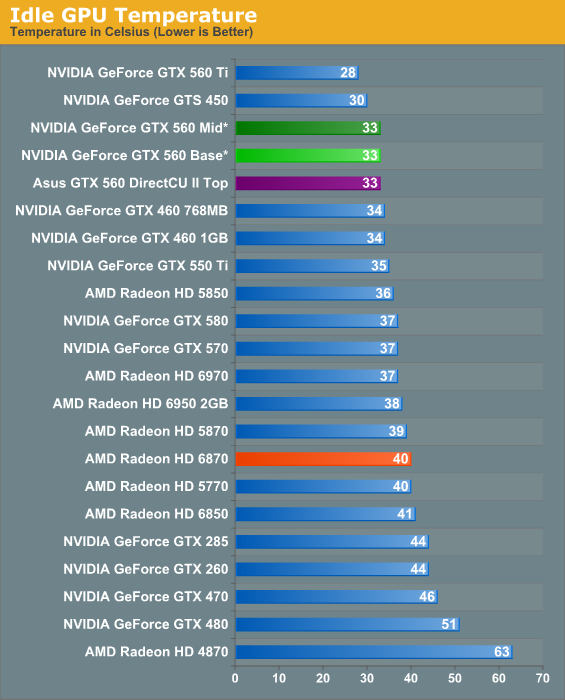
Idle temperatures are largely a function of the cooler being used. The GTX 560 Ti did exceptionally well here, and it’s nearly impossible to compete with it. At 33C the ASUS GTX 560 is among the coolest cards in our regular charts, and yet it can’t catch the GTX 560 Ti.
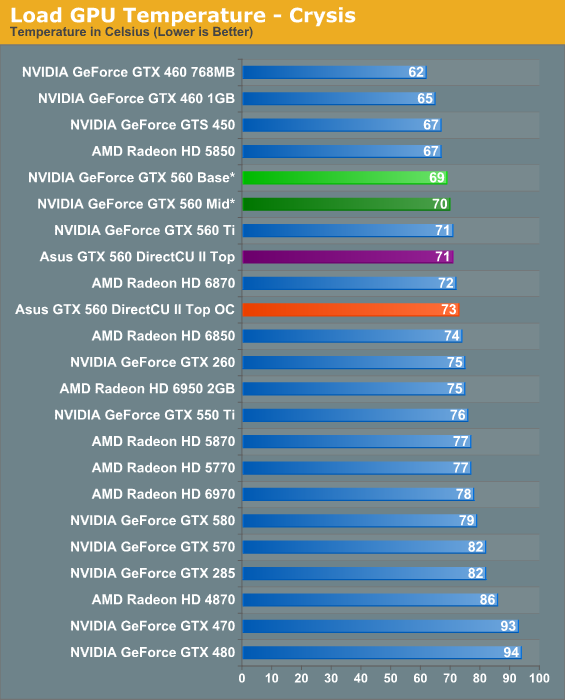
When looking at ASUS cards, we often see them favoring aggressive cooling over noise. We’ll get to noise in a bit, but certainly it looks like they have cooling as if not more aggressive than the reference GTX 560 Ti. At 71C the ASUS GTX 560 and the GTX 560 Ti are tied, and are both well below a number of other cards in temperature; an impressive feat given the performance we’ve seen earlier. Our simulated cards are a bit cooler, but they would probably be even better if they were at a lower voltage.
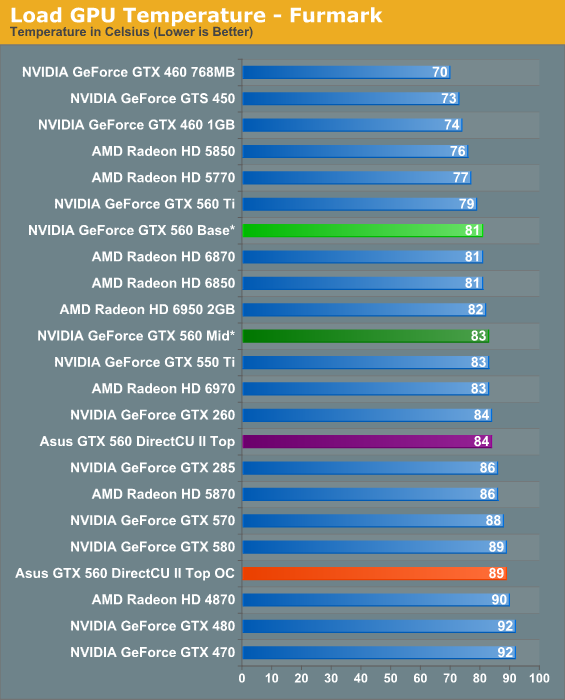
Unfortunately FurMark doesn’t look as good as Crysis, thanks in part to AMD’s use of PowerTune on the 6900 series, and the higher power consumption due to ASUS’s overvolting making itself felt. 84C under Furmark is not at all bad as it’s not even close to any sort of critical GPU temperature, but it’s not quite chart topping. It’s also well off what we’ve seen the GTX 560 Ti do, which is 5C cooler at 79C. Further overclocking and overvolting on the ASUS GTX 560 does dive the temperature up to 89C, which means at 1.062v we’re probably applying as much voltage as we can reasonably get away with.
As for our simulated cards, both the GTX 560 Base and GTX 560 Mid are well above their GTX 460 counterparts. Part of this goes back to power consumption, but it also involves just how different their respective coolers are.
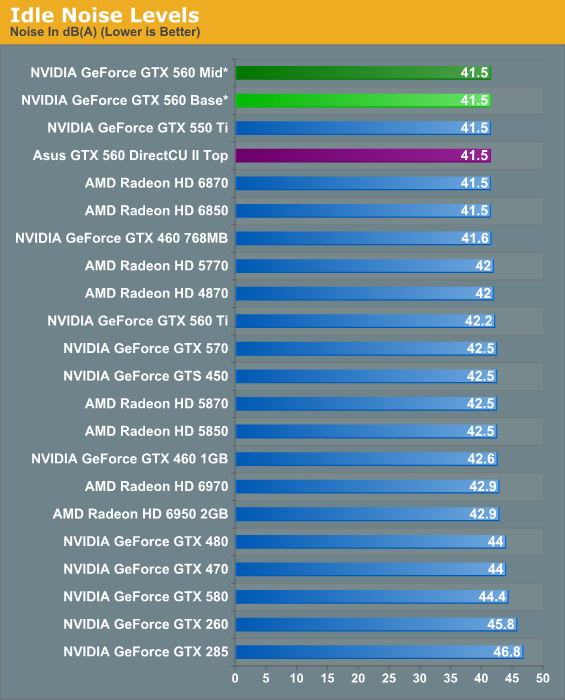
It’s rare to see a card not bottom out on our idle noise testing, and the ASUS GTX 560 doesn’t disappoint. At idle it’s whisper quiet, and it can’t be distinguished from our noise floor.
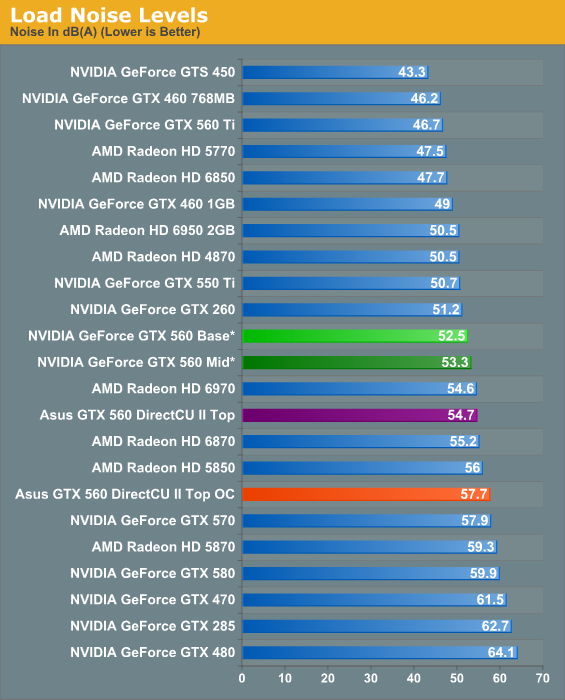
Last but not least is our look at load noise, where ASUS’s generally aggressive cooling finally becomes quantified. At 54.7dB it’s about the middle of the pack, and actually beats the Radeon HD 6870. But we’ve seen the reference GTX 560 Ti complete the same test at 8dB less – even if we could equalize the power consumption the GTX 560 Ti reference cooler seems to have an edge over ASUS’s DirectCU II cooler when it comes to noise under load. Cutting down the clocks to Base or Mid levels helps this some, but then rendering performance shrinks away from the GTX 560 Ti.
Final Thoughts
Ideally I like to end all of my video card reviews with some decisive, concrete thoughts and a well-founded opinion about a video card. This is not going to be happening today.
NVIDIA’s decision to forgo a reference card for their new $200 champion is a bit odd – the fact that we’re not going to seeing many (if any) reference clocked cards is all the odder. It’s hard to make a solid recommendation when there are so many slightly different products that will be composing the GTX 560 lineup. Based on what we know about pricing and performance though, we can take a stab at it.
The message from NVIDIA is clear: while the GeForce GTX 560 is meant to be their new $200 card, they don’t intend for the reference clocked (810MHz/4004MHz) card to be that $200 product. Instead factory overclocked cards will flesh out the GTX 560 lineup, and it will be the cards with small factory overclocks that will fill the $200 role. Based on the MSRPs and configurations we’ve been given, our best guess is that the average $200 GTX 560 will be a “mid-grade” card at around 850MHz for the core and 4100MHz (data rate) for the memory. It’s from here where we’re going to draw our conclusions about the GTX 560, at least as far as we can.
As has been the case with most of the GTX 500 series and Radeon HD 6000 series launches, when the cards are close, it’s only close on average. In this case the GTX 560 Mid is similar in performance to the Radeon HD 6870 on average, but this is because the two are constantly swapping for first place, and the difference between the two is quite dramatic at times. On average the GTX 560 Mid is ahead of the 6870 by just enough to justify its $200 price tag relative to the 6870’s price, but the final choice is still heavily game dependent. Just because the GTX 560 Mid performs $20 better doesn’t make it the better card if you’re going to be playing games like Crysis or STALKER, where the 6870 has a definite lead. But if it’s going to be games like Civilization V or HAWX, then the GTX 560 Mid is the clearcut winner.
If you had to buy a card for around $200 with no knowledge of the games it will be used with, the GTX 560 Mid is a safe bet, but only just. Otherwise our usual advice applies: it’s the games, stupid. The GTX 560 won’t recapture the market-redefining launch that was the GTX 460 series, but it’s a solid entry in the 500 series and a suitable successor to the GTX 460 1GB.
Now if that’s our advice for a “mid-grade” GTX 560, how about a “high-grade” card such as the ASUS GTX 560 DirectCU II Top, with its much larger factory overclock. In terms of performance the ASUS GTX 560 Top looked very good, and while it’s a smidge slower than the GTX 560 Ti, it’s basically good enough to be its equal. From what we’ve seen, with a 925Mhz+ factory overclock a GTX 560 can erase the GTX 560’s deficit versus the GTX 560 Ti.
The one hitch with this is that while these factory overclocks bring the GTX 560 closer to the GTX 560 Ti in performance, the GTX 560 Ti is approaching the GTX 560 in price. For the $220 MSRP of the ASUS GTX 560, you could get one of a few different reference or near-reference clocked GTX 560 Tis. This doesn’t make the ASUS GTX 560 a poor choice, but it does mean there’s an even wider array of cards to work through around $220.
I like the ASUS GTX 560 for its build quality, but for its GTX 560 Ti-like performance I have to compare it to the original reference card. The reference GTX 560 Ti was simply a ridiculously good card when it came to balancing noise and performance. The ASUS GTX 560 can match the GTX 560 Ti’s performance, but in traditional ASUS fashion not its acoustic properties. So long as aftermarket overclocking is not a factor, I could only recommend the ASUS GTX 560 DirectCU II Top so long as it’s cheaper than a reference GTX 560 Ti.
Wrapping things up, given the factory overclocks we’re seeing it makes the prospects of a good aftermarket overclock on the mid-grade cards a very good possibility. It’s unlikely that the GTX 560 will match the GTX 460 in raw overclock potential, but as long as manufacturers aren’t aggressively binning 950MHz+ chips to their top cards, the door is left open for getting quite a bit more performance out of the GTX 560.

